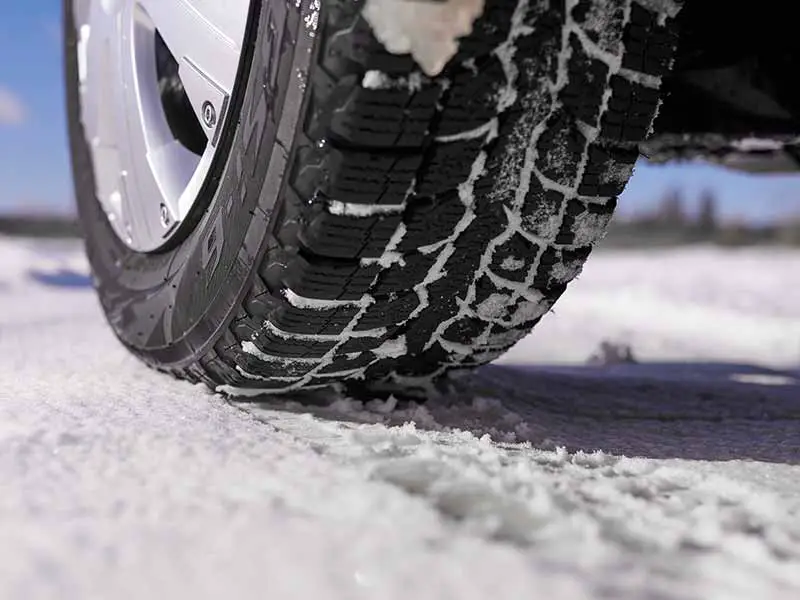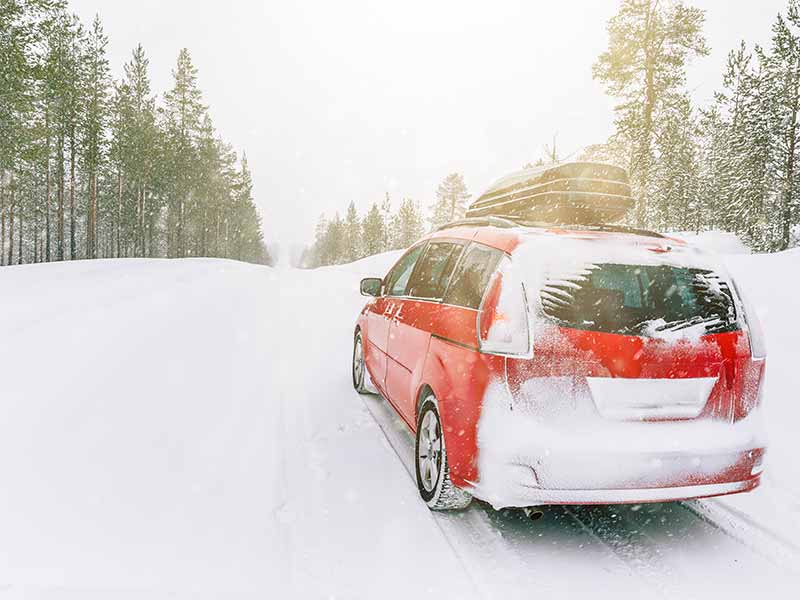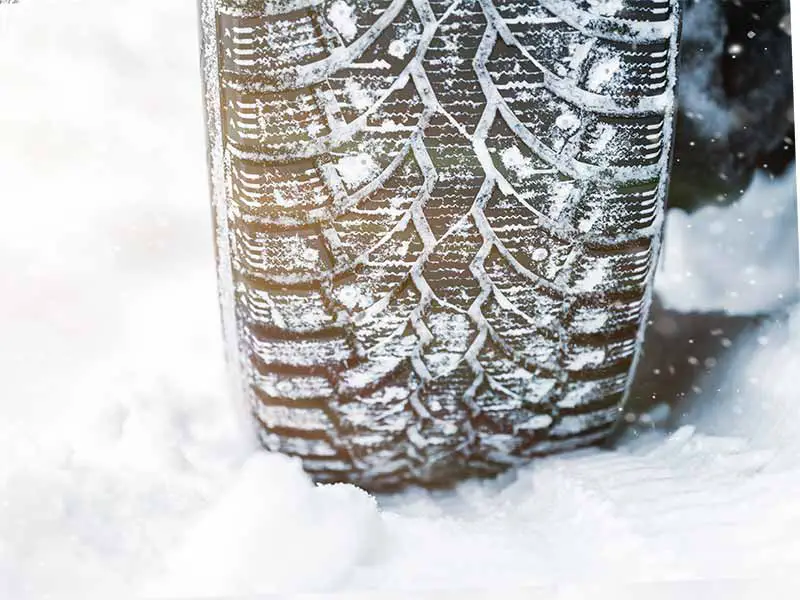Ever been caught in a sudden snowstorm or a torrential downpour and wondered if your tires are up to the task? The type of tires you have on your vehicle can make a world of difference in your driving experience and safety. But with terms like “all-season,” “all-weather,” and “winter tires” floating around, how do you know which is the best choice for you?
Difference Between All-Season And All-Weather Tires
All-season tires offer balanced performance suitable for mild weather conditions but are not ideal for extreme winter or summer scenarios. All-weather tires are more versatile, designed to handle a broader range of conditions including moderate winter weather.
In this article, we’ll delve deep into the differences between all-season and all-weather tires, covering everything from their construction and performance in various conditions to their pros and cons. We’ll also guide you on how to choose the right type of tire based on your specific needs and driving conditions.
Let’s take a closer look.

What are All-Season Tires?
An all-season tire is a type of tire designed to provide adequate performance across a wide range of weather conditions. They are the “jack-of-all-trades” in the tire world, offering a balanced mix of features suitable for most driving conditions. However, it’s crucial to note that while they are versatile, they are not specialized for extreme weather conditions like harsh winter weather or scorching summer heat.
How They Work
All-season tires are engineered with a specific type of rubber compound and tread pattern to offer a balanced performance. Here’s how they work:
- Rubber Compound: The rubber used in all-season tires is formulated to remain flexible in moderate temperature ranges, from mild winters to warm summers.
- Tread Pattern: These tires have moderate tread depths and a symmetrical pattern, which helps in providing a smooth and quiet ride. The treads are designed to channel water away, reducing the risk of hydroplaning in wet conditions.
Performance in Different Conditions
Dry Roads
- Traction: All-season tires offer good traction on dry roads.
- Handling: They provide stable handling for everyday driving.
Wet Roads
- Water Evacuation: The tread design helps to evacuate water, reducing the risk of hydroplaning.
- Grip: They offer reasonable grip but are not as effective as specialized summer tires.
Light Snow
- Snow Grip: These tires can handle light snow but are not designed for heavy snow or icy conditions.
- Winter Performance: If you live in an area with mild winters, all-season tires may suffice. However, they won’t offer the same level of grip or control as dedicated winter tires in severe snow conditions.
Limitations
While all-season tires are versatile, they have limitations:
- Winter Weather: They are not designed for harsh winter weather conditions. In heavy snow or icy conditions, their performance is subpar compared to dedicated winter tires.
- Extreme Heat: In extremely hot conditions, the rubber compound may not provide the same level of performance as summer tires.
Ideal For
- Mild Climates: All-season tires are best suited for regions with mild weather conditions year-round.
- Everyday Driving: These are ideal for daily commuting, errands, and moderate highway driving.
Not Ideal For
- Severe Winter Weather: If you live in an area with harsh winters, you should consider switching to winter tires for the season.
- High-Performance Driving: These tires are not designed for high-speed or aggressive driving conditions.

What are All-Weather Tires?
All-weather tires are a step up from all-season tires in terms of versatility. They are designed to provide reliable performance in all weather conditions, including harsh winter weather. These tires are essentially a hybrid, combining elements from both all-season and winter tires to offer year-round usability.
How They Work
The engineering behind all-weather tires is quite advanced, aiming to offer the best of both worlds. Here’s how:
- Rubber Compound: All-weather tires use a more advanced rubber compound that remains flexible in a broader range of temperatures, from hot summers to cold winters.
- Tread Pattern: These tires feature more aggressive tread patterns with deeper grooves and more biting edges. This design improves traction on snow and ice compared to all-season tires.
Performance in Different Conditions
Dry Roads
- Traction: Excellent traction similar to all-season tires.
- Handling: Stable and reliable handling for various driving conditions.
Wet Roads
- Water Evacuation: Superior tread design helps in better water evacuation, reducing the risk of hydroplaning.
- Grip: Enhanced grip on wet roads compared to all-season tires.
Snow and Ice
- Snow Grip: Significantly better grip in snowy conditions than all-season tires.
- Winter Performance: These tires are marked with the severe snow traction symbol, indicating they meet specific snow traction performance requirements.
Limitations
Even all-weather tires have some drawbacks:
- Tread Wear: The more aggressive tread pattern can lead to quicker tread wear compared to all-season tires.
- Noise: Due to the aggressive tread pattern, these tires can be noisier than all-season tires.
Ideal For
- Variable Climates: If you live in an area with fluctuating weather conditions, including snow and rain, all-weather tires are a good choice.
- Year-Round Use: These tires are designed for year-round use, eliminating the need for tire changes between seasons.
Not Ideal For
- Extreme Conditions: While they are good for most conditions, they may not perform as well as specialized tires in extreme heat or for high-performance driving.
- Longevity Concerns: If tread life is a major concern for you, then you might want to consider the wear rate of these tires.
The 3-Peak Mountain Snowflake Symbol
The 3-Peak Mountain Snowflake (3PMSF) symbol is a pictogram that appears on the sidewall of tires. It depicts a snowflake set against the backdrop of a mountain with three peaks. This symbol serves as an indicator that the tire meets or exceeds industry-established snow traction performance requirements.
All all-weather tires will usually have this symbol, while some all-season tires will qualify to wear it on their sidewall.
Qualifications for the Symbol
To earn the 3-Peak Mountain Snowflake symbol, a tire must pass specific tests that measure its performance in snow traction and braking. These tests are generally standardized and regulated by tire and automotive industry organizations. The criteria for earning this symbol are as follows:
- Snow Traction Test: The tire must achieve a level of traction in snow that is at least 110% of a reference tire in standardized testing conditions.
- Braking and Handling: The tire is also evaluated for its braking and handling capabilities on snow-covered surfaces. It must demonstrate reliable and safe performance in these tests.
- Rubber Compound: The rubber compound used in the tire must be capable of remaining flexible in cold temperatures, which is crucial for maintaining grip on snowy and icy roads.
- Tread Pattern: The tire’s tread pattern is also considered, as it must be designed to effectively channel snow and slush away from the tire’s contact patch to prevent hydroplaning.

All-Season Vs All-Weather Tires
When it comes to choosing between all-season and all-weather tires, the decision can be confusing. Both types offer their own set of advantages and disadvantages. In this section, we’ll break down the key differences to help you make an informed choice.
Performance Metrics
Dry Roads
- All-Season: Good traction and stable handling.
- All-Weather: Similar performance but may offer slightly better grip.
Wet Roads
- All-Season: Adequate water evacuation but may lack in grip compared to specialized tires.
- All-Weather: Superior water evacuation and better grip.
Snow and Ice
- All-Season: Limited capabilities, not recommended for harsh winter conditions.
- All-Weather: Designed for better snow and ice traction, marked with the severe snow traction symbol.
Longevity and Tread Wear
- All-Season: Generally longer tread life due to less aggressive tread pattern.
- All-Weather: May experience quicker tread wear due to more aggressive tread design.
Noise Levels
- All-Season: Typically quieter due to less aggressive tread pattern.
- All-Weather: Can be noisier due to the more aggressive tread.
Versatility
- All-Season: Suitable for mild climates and everyday driving but not for extreme conditions.
- All-Weather: Designed for a broader range of conditions, including harsh winter weather.
Cost Considerations
- All-Season: Usually less expensive upfront but may require an additional set of winter tires for those in snowy climates.
- All-Weather: May be more expensive initially but could save money in the long run by eliminating the need for a separate set of winter tires.
Ideal Use Cases
- All-Season: Best for mild climates and drivers who don’t encounter extreme weather conditions.
- All-Weather: Suitable for variable climates and those who want year-round performance without changing tires.
Not Ideal For
- All-Season: Not suitable for harsh winter conditions or high-performance driving.
- All-Weather: May not be ideal for extreme heat or for those concerned about tread life.

All-Weather Tires Vs Snow Tires
When winter arrives, many drivers wonder whether all-weather tires are sufficient or if they should invest in dedicated snow tires. Both have their pros and cons, especially when it comes to handling snowy and icy conditions. Let’s explore how they stack up against each other.
Snow Traction and Grip
Snow Tires
- Specialized Design: Snow tires are specifically designed for winter conditions, offering superior grip and traction on snow and ice.
- Rubber Compound: The rubber used in snow tires remains flexible at low temperatures, enhancing grip.
All-Weather Tires
- Versatile Design: While not as specialized as snow tires, all-weather tires offer good snow traction.
- Rubber Flexibility: Similar to snow tires, the rubber compound in all-weather tires remains flexible in cold temperatures.
Handling and Control
- Snow Tires: Offer the best control and stability in snowy conditions, reducing the likelihood of skids and slips.
- All-Weather Tires: Provide good control but may not offer the same level of precision as snow tires in severe conditions.
Versatility and Convenience
- Snow Tires: Require changing before and after the winter season, adding to maintenance time and costs.
- All-Weather Tires: Designed for year-round use, eliminating the need for seasonal tire changes.
Cost Considerations
- Snow Tires: While effective, they require an initial investment and potentially additional costs for changing and storing tires seasonally.
- All-Weather Tires: May be more cost-effective in the long run, especially if you factor in the convenience of not having to switch tires.
Ideal Use Cases
- Snow Tires: Best for regions with severe winter conditions, including heavy snowfall and icy roads.
- All-Weather Tires: Suitable for areas with moderate winter conditions and for drivers who prefer the convenience of year-round tires.

How to Choose Between All-Season, All-Weather, and Winter Tires
Selecting the right type of tire for your vehicle can be a daunting task, especially with the variety of options available. In this section, we’ll provide guidelines to help you choose between all-season, all-weather, and winter tires based on your specific needs and driving conditions.
Assess Your Driving Conditions
- Climate: Consider the typical weather conditions in your area. Is it mostly mild, or do you experience extreme seasons?
- Road Conditions: Think about the kinds of roads you’ll be driving on. Are they well-maintained, or do you often drive on rough or slippery surfaces?
Performance Metrics Comparison
- All-Season Tires: Good for mild climates and offer balanced performance but not ideal for extreme conditions.
- All-Weather Tires: Suitable for variable climates with moderate winter conditions. Good for year-round use.
- Winter Tires: Best for severe winter conditions but require changing after the winter season.
Cost Considerations
- Initial Cost: All-weather and winter tires are generally more expensive upfront.
- Long-Term Costs: Consider the cost of seasonal tire changes and potential quicker tread wear for all-weather tires.
Convenience Factor
- All-Season and All-Weather: Offer the convenience of not having to change tires seasonally.
- Winter Tires: Require a seasonal change, adding to maintenance time and potentially costs.
Specialized Needs
- High-Performance Driving: If you engage in high-speed or off-road driving, specialized tires may be necessary.
- Heavy Snowfall: In regions with heavy snowfall, winter tires are often the safest choice.
Safety Concerns
- Snow and Ice: If you live in an area with severe winter conditions, winter tires are the safest option.
- Wet Roads: All-weather tires offer better wet grip compared to all-season tires.
Final Tips for Making Your Choice
- Consult Local Regulations: Some areas have laws requiring the use of winter tires during certain months.
- Read Reviews and Ratings: Look for reviews and ratings specific to your vehicle type and driving conditions.
Resources
Below are some links you may find helpful when learning about tires
- All-weather tires – the tip of the iceberg – Discount Tire
- All-season versus all-weather tires – TireBuyer.com
Final Thoughts
All-season tires are a good fit for mild climates and everyday driving but fall short in extreme conditions. On the other hand, all-weather tires offer a more versatile option, capable of handling a variety of weather conditions, including moderate snow. However, they may come with quicker tread wear and a higher initial cost.
Your choice should be based on your local climate, the conditions you frequently drive in, and your specific needs. By making an informed decision, you can ensure a safer, more comfortable driving experience year-round.
Good luck and happy motoring.





